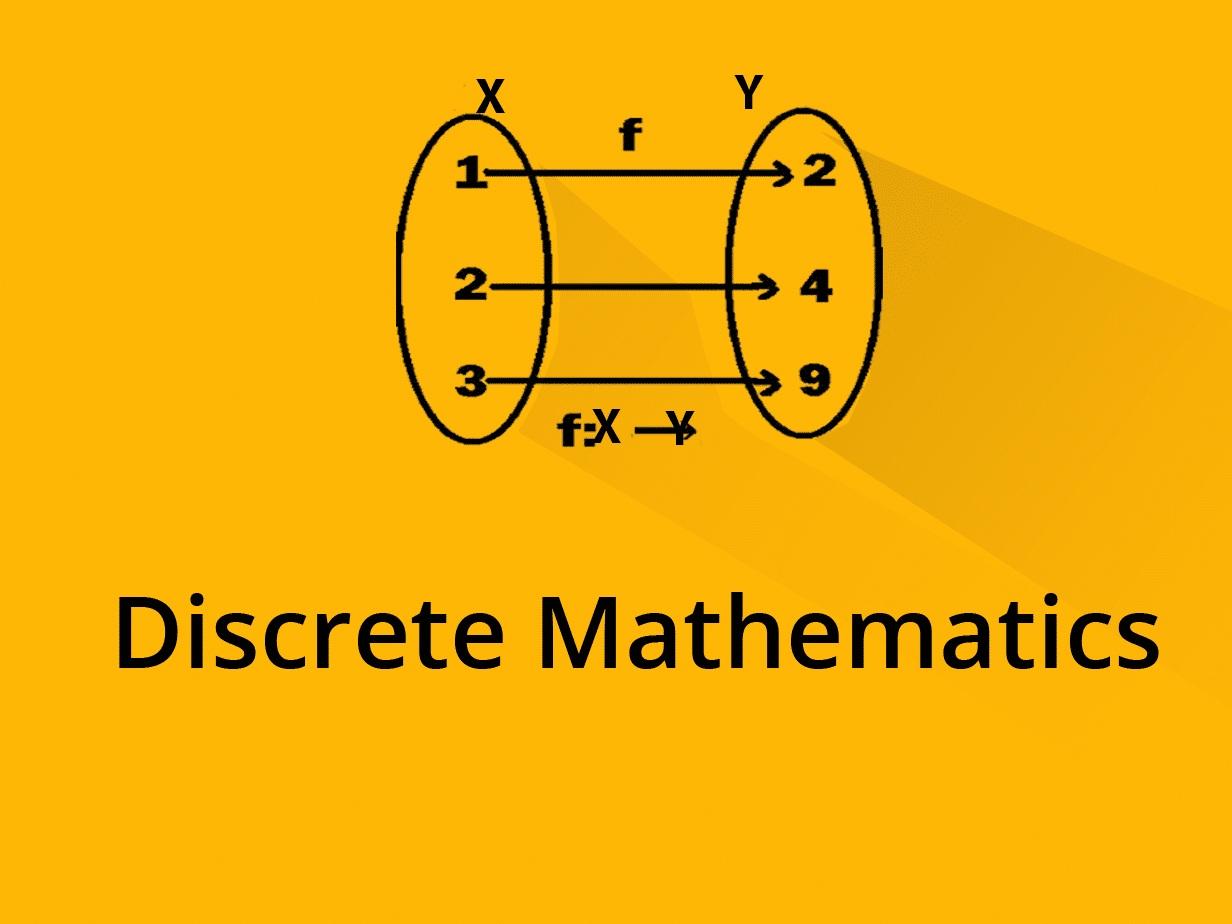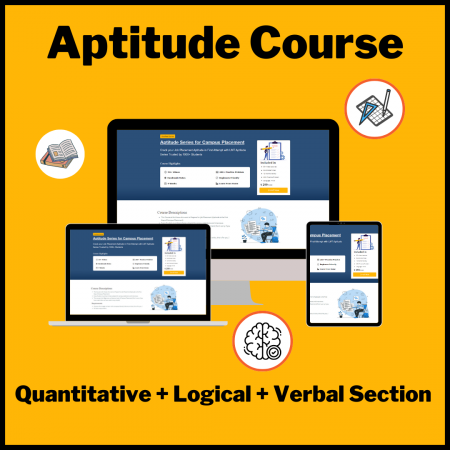Discrete Structures and Graph Theory

-
Course Overview
-
Set Theory
-
Logic
- Laws Of Logic With Solved Example
- Logical Equivalence with Solved Examples
- Statement forms Tautology Contradiction and Contingency | Part 1 |
- Statement forms Tautology Contradiction and Contingency | Part 2 |
- Mathematical Induction | Part 01 |
- Mathematical Induction | Part 02 |
- Logical Statements and Symbolization with Example
-
Relations & Functions
-
Counting
-
Trees & Graphs
-
DSGT Notes
-
Discrete Structures and Graph Theory Viva Question
Discrete Mathematics
Tutor: Adwait Sharma
What you’ll Learn:
- How to cultivate clear thinking and creative problem solving.
- Learn the construction and understanding of mathematical proofs.
- Prepare for the mathematical aspects of other Computer Engineering courses
Description:
Discrete Mathematics is the semester 3 subject of computer engineering in Mumbai University. Basic Mathematics. Course Objectives for the subject Discrete Mathematics is that Cultivate clear thinking and creative problem solving. Thoroughly train in the construction and understanding of mathematical proofs. Exercise common mathematical arguments and proof strategies. Thoroughly prepare for the mathematical aspects of other Computer Engineering courses. Course Outcomes for the subject Discrete Mathematics At the end of the course student will be able to Understand the notion of mathematical thinking, mathematical proofs and to apply them in problem solving. Ability to reason logically. Ability to understand relations, Diagraph and lattice. Ability to understand use of functions, graphs and their use in programming applications. Understand use of groups and codes in Encoding-Decoding. Apply discrete structures into other computing problems such as formal specification, verification, artificial intelligence, cryptography, Data Analysis and Data Mining etc.
Discrete mathematics is the study of mathematical structures that are fundamentally discrete rather than continuous. In contrast to real numbers that have the property of varying “smoothly”, the objects studied in discrete mathematics such as integers, graphs, and statements in logic do not vary smoothly in this way, but have distinct, separated values. Discrete mathematics therefore excludes topics in “continuous mathematics” such as calculus or Euclidean geometry. Discrete objects can often be enumerated by integers. More formally, discrete mathematics has been characterized as the branch of mathematics dealing with countable sets(finite sets or sets with the same cardinality as the natural numbers). However, there is no exact definition of the term “discrete mathematics.”Indeed, discrete mathematics is described less by what is included than by what is excluded: continuously varying quantities and related notions. The set of objects studied in discrete mathematics can be finite or infinite. The term finite mathematics is sometimes applied to parts of the field of discrete mathematics that deals with finite sets, particularly those areas relevant to business. Research in discrete mathematics increased in the latter half of the twentieth century partly due to the development of digital computers which operate in discrete steps and store data in discrete bits. Concepts and notations from discrete mathematics are useful in studying and describing objects and problems in branches of computer science, such as computer algorithms, programming languages, cryptography, automated theorem proving, and software development. Conversely, computer implementations are significant in applying ideas from discrete mathematics to real-world problems, such as in operations research.
Module Set Theory consists of the following subtopics Sets, Venn diagrams, Operations on Sets, Laws of set theory, Power set and Products, Partitions of sets, The Principle of Inclusion and Exclusion. Module Logic consists of the following subtopics Propositions and logical operations, Truth tables, Equivalence, Implications ,Laws of logic, Normal Forms Predicates and Quantifiers ,Mathematical Induction. Module Relations and Functions consists of the following subtopics Relations, Paths and Digraphs ,Properties and types of binary relations ,Operations on relations, Closures, Warshall‟s algorithm, Equivalence and partial ordered relations, Poset, Hasse diagram and Lattice, Functions: Types of functions – Injective, Surjective and Bijective. Composition of functions, Identity and Inverse function, Pigeon-hole principle. Module Counting consists of the following subtopics Permutations , Combinations ,Elements of Probability, Discrete Probability and Conditional Probability, Generating Functions and Recurrence Relations Recursive Functions, Introduction to Functional Programming. Module Graphs consists of the following subtopics Definitions, Paths and circuits: Eulerian and Hamiltonian, Types of graphs, Sub Graphs, Isomorphism of graphs. Module Algebraic Structures and Coding Theory consists of the following subtopics Algebraic structures with one binary operation: semigroup, monoid and group, Abelian group Isomorphism, Homomorphism and Automorphism, Cyclic groups, Normal subgroups, Codes and group codes.
Suggested texts books for the subject Discrete Mathematics by Mumbai university is as follows BernadKolman, Robert Busby, Sharon Cutler Ross, Nadeem-ur-Rehman, “Discrete Mathematical Structures”, Pearson Education. C.L.Liu, Elements of Discrete Mathematics, second edition 1985, McGraw-Hill BookCompany. Reprinted 2000. K.H.Rosen, Discrete Mathematics and applications, fifth edition 2003, TataMcGraw Hill publishing Company. D.E. Rydeheard University of Manchester, R.M. Burstall, University of Edinburgh “Computational Category Theory”. Suggested reference books for the subject Discrete Mathematics by Mumbai university is as follows Y N Singh, “Discrete Mathematical Structures”, Wiley-India.J .L.Mott, A.Kandel, T.P .Baker, Discrete Mathematics for Computer Scientists and Mathematicians, second edition 1986, Prentice Hall of India. J. P. Trembley, R. Manohar “Discrete Mathematical Structures with Applications to Computer Science”, TataMcgraw-Hill. Seymour Lipschutz , Marc Lars Lipson,“ Discrete Mathematics” Schaum‟sOutline, McGraw Hill Education.
Electronic Circuits and Communication Fundamentals
Electronic Circuits and Communication Fundamentals is the semester 3 subject of computer engineering in Mumbai University. Prerequisite for studying this subject is Basic electrical engineering. Course Objectives of the subject Electronic Circuits and Communication Fundamentals is to develop the knowledge of semiconductor devices and circuits, and explain their use in communication applications. To inculcate circuit analysis capabilities in students. To gain knowledge in electronic devices and circuits that is useful in real life applications. To understand the fundamental concepts of electronic communication and their use in computer applications. Course Outcomes of the subject Electronic Circuits and Communication Fundamentals At the end of the course student should be able. To understand the use of semiconductor devices in circuits and analyze them.To understand importance of oscillators and power amplifiers in communication system.To understand basic concepts of operational amplifier and their applications. To understand the fundamental concepts of electronic communication .To apply knowledge of electronic devices and circuits to communication applications. To study basic concepts of information theory.
An electronic circuit is composed of individual electronic components, such as resistors, transistors, capacitors, inductors and diodes, connected by conductive wires or traces through which electric current can flow. To be referred to as electronic, rather than electrical, generally at least one active component must be present. The combination of components and wires allows various simple and complex operations to be performed: signals can be amplified, computations can be performed, and data can be moved from one place to another. Circuits can be constructed of discrete components connected by individual pieces of wire, but today it is much more common to create interconnections by photolithographic techniques on a laminated substrate (a printed circuit board or PCB) and solder the components to these interconnections to create a finished circuit. In an integrated circuit or IC, the components and interconnections are formed on the same substrate, typically a semiconductor such as doped silicon or gallium arsenide. Communication is the act of conveying meanings from one entity or group to another through the use of mutually understood signs, symbols, and semiotic rules.
Module Electronic Circuits consists of the following subtopics Bipolar junction transistor. Input and Output characteristics, Types of Biasing – Fixed bias, self-bias, voltage divider bias, DC load line and significance, CE amplifier using re model, (Analysis based Numericals). Module Power Amplifiers consists of the following subtopics Introduction, Class A and Class C power amplifier. Oscillators: Introduction, Barkhausen criteria, Colpitts oscillator and Crystal oscillator. Module Electronic Circuits consists of the following subtopics Operational Amplifier and its applications Op-amp block diagram, parameters and characteristics, applications Inverting and Non inverting amplifier, Summing Amplifier(Numerical), Difference amplifier, Basic Integrator and Differentiator, Comparator, Zero Crossing Detector.
Module Communication Fundamentals consists of the following subtopics Analog Communication Block diagram and elements of analog communication systems, Theory of amplitude modulation and types of AM (Numerical) Generation of DSB SC using diode based balanced modulator, Generation of SSB using phase shift method, Introduction of FM,and its mathematical representation, Statement of Carson‟s Rule Comparison of AM, FM, Block diagram of AM transmitter (HLM and LLM) Block diagram of AM Superheterodyne receiver. Module Pulse Modulation and Multiplexing consists of the following subtopics Statement of Sampling Theorem, Generation and detection of PAM, PWM, PPM, PCM, DM and ADM. Principle of TDM using PCM and FDM.Communication Fundamentals: Information theory. Amount of information, average information, information rate, Statement of Shannon’s theorem, channel capacity (Numericals).
Suggested texts books for the subject Electronic Circuits and Communication Fundamentals by Mumbai university is as follows Robert Boylestad, „Electronic Devices and circuit Theory‟, Prentice Hall. D Roy Choudhury, „ Linear integrated Circuits‟ New Age International Ltd. G. Kennedy, B. Davis, S R M Prasanna, „Electronic Communication Systems‟, McGraw Hill, 5th Edition. Wayne Tomasi, „Electronic Communication Systems (fundamentals through advanced)‟, Pearson Education, 4th Edition. K. Sam Shanmugam,‟ Digital and analog communication systems‟, Wiley. Suggested reference books for the subject Electronic Circuits and Communication Fundamentals by Mumbai university is as follows Donald Neamen, „Electronic Circuit Analysis and Design‟, Tata McGraw Hill,2nd Edition. K. R. Botkar, „Integrated Circuits‟, Khanna Publishers, 9th Edition Simon Haykin, „Digital Communication systems‟, Wiley. David Bell, „Electronic Devices and Circuits‟, Oxford, 5th Edition. Ramakant A. Gayakwad, „Op-amp and linear integrated circuits‟, PHI, 3rd edition.
Join in to learn Discrete Mathematics, equally important from the academic as well as real-world knowledge.
Modules Covered:
- Set Theory
- Logic
- Relations and Functions
- Counting
- Graphs
- Algebraic structures & Coding theory
Feel forward to have a look at course description and demo videos and we look forward to see you learning with us.
Prepare For Your Placements: https://lastmomenttuitions.com/courses/placement-preparation/
![]()
/ Youtube Channel: https://www.youtube.com/channel/UCGFNZxMqKLsqWERX_N2f08Q
Follow For Latest Updates, Study Tips & More Content!
Course Features
- Lectures 35
- Quizzes 0
- Duration 20 hours
- Skill level All levels
- Language Hindi
- Students 3540
- Certificate No
- Assessments Yes
-
Kk1
Best
Best



![SEBI GRADE A – IT 2025 SEBI GRADE A 2025 – IT [ Phase 1 + Phase 2 ]](https://lastmomenttuitions.com/wp-content/uploads/2025/12/SEBI-GRADE-A-IT-2025-450x450.png)

5 Comments
Discrete maths ke Sab topic pe lectures nahi hai kya
Wonderfull, and helpfull.
Thanks a lot!!!!!!!!!!!!!!!!
Thanku
So much🌸🌸
Explained very well…. thanks for your lecture
Thankyou for sharing 💓💓💝